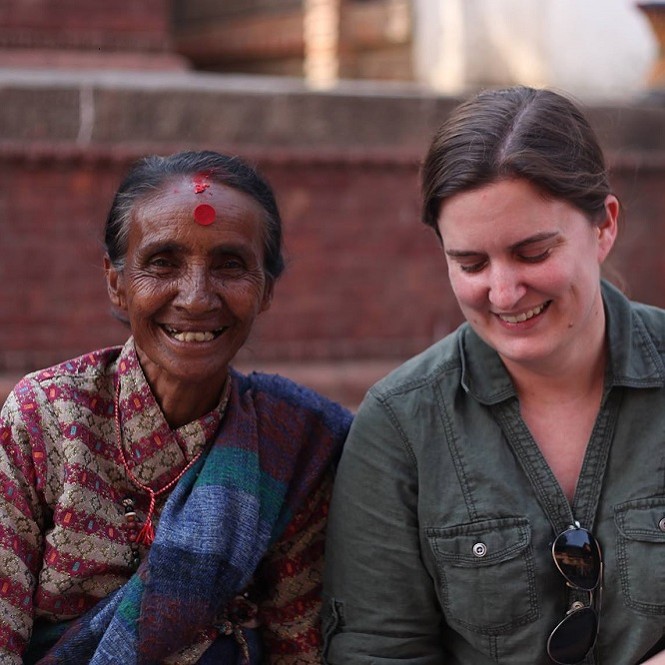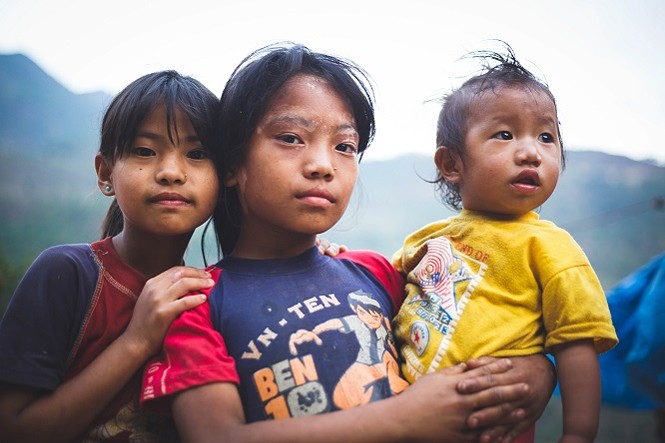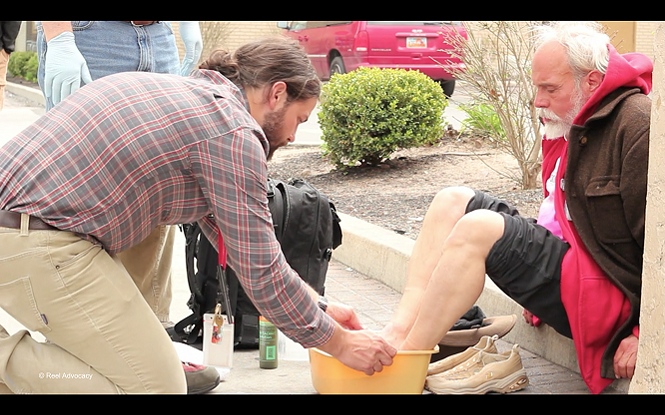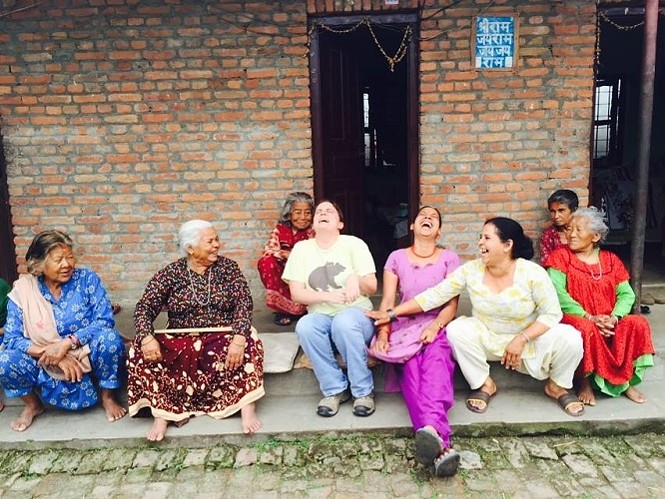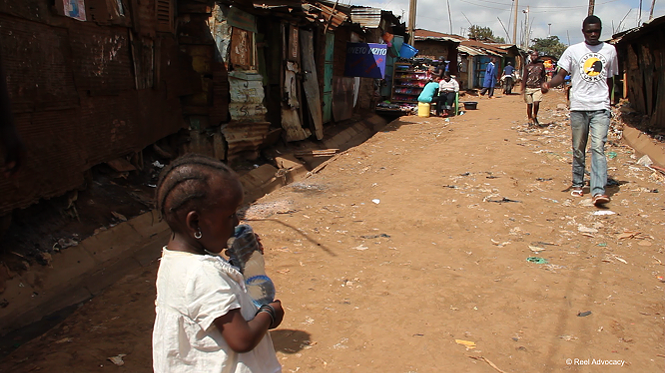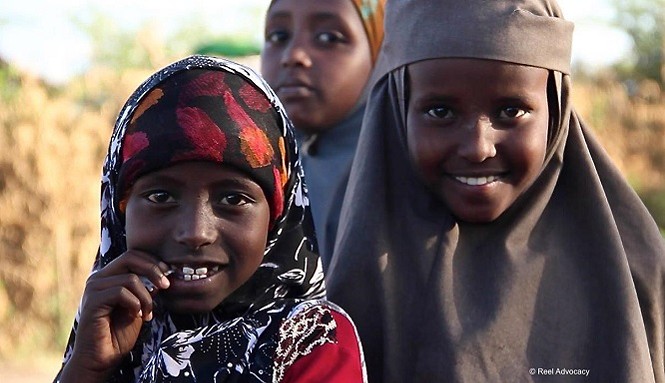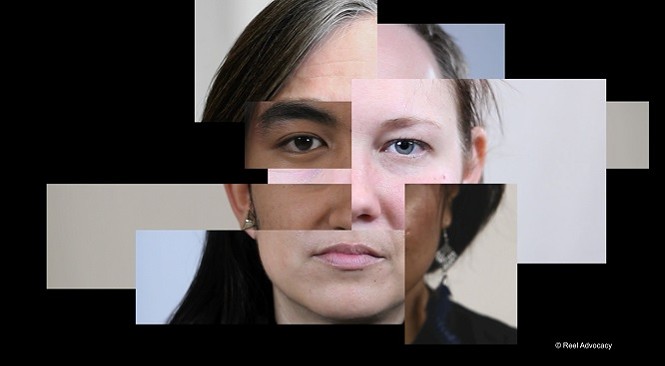Support the Free Press | Facts matter. Truth matters. Journalism matters
Salt Lake City Weekly has been Utah's source of independent news and in-depth journalism since 1984. Donate today to ensure the legacy continues.
Tuesday, January 19, 2016
Reel Advocacy
Nonprofit filmmaking to help greater humanitarian causes.
Posted By Gavin Sheehan on January 19, 2016, 2:14 PM
Just before the film festival season kicks off up in the hills this week, we're focusing on one more production company helping out in ways beyond entertainment value. Reel Advocacy is a local nonprofit organization, with a focus on creating films and other media geared toward storytelling for humanitarian efforts across the world. The group has produced films about Sudanese refugees, the Road Home, the Inclusion Center, the Fourth Street Clinic, HawkWatch and more. Today we chat with Amy Bronson, the Executive Director and primary filmmaker for the organization to talk about her career and starting up the group, as well as their films and what they're working on now. (All photos courtesy of Reel Advocacy.)
Amy Bronson
ReelAdvocacy.org
Gavin: Hey Amy, first thing, tell us a little bit about yourself.
Amy: I am a filmmaker living in Salt Lake City, with my hound named Idgie. I moved out here from West Chester, Pennsylvania 11 years ago to study film at the U, and the cost of living here made it difficult to return to the east coast! I am the Executive Director of Reel Advocacy, a nonprofit video production company I started a few years ago. I also teach two courses at the University of Utah: Documentary and Social Justice, and Himalayan Film for Learning Abroad—an intense three-week documentary production course in Nepal where I trek with students into the Himalayas while simultaneously shooting documentaries about villagers there. On the rareoccasion I’m not working in film, I’m sneaking off with my first love, music.
Gavin: What first made you take an interest in film, and what were some of your favorites and influences?
Amy: During my senior year of high school, I helped develop a program that paired incoming freshman with senior mentors, named SHOC - Students Helping Other Classmates. The point of it was to make high school a little less daunting for incomingfreshmen, and to prevent any bullying. With a loaned camcorder from my dad, I voluntarily made a promo for SHOC that was a funny portrayal of freshman fears combined with over-the-top rescues from seniors. I got really into it, and taught myself how to shoot and edit in the process. The combination of technology, creativity/art, and music had me hooked instantly. Some of my favorite narrative films are Habla Con Ella, Being John Malkovich, Solaris, Lost in Translation, Waiting for Guffman, and The Royal Tenenbaums. Also the Angels in America miniseries that HBO did. My favorite documentaries change all the time, but as of now they are The Five Obstructions, Times of Harvey Milk, Born into Brothels, Inequality for All, Stop Making Sense, The Fog of War, For the Bible Tells Me So, and Spellbound. The Five Obstructions contains my favorite quote about creativity: “the absence of limitations is the enemy of art.” It’s a quote I repeat to myself particularly when shooting in places with no water or electricity.
Gavin: What made you decide to go to the University of Utah for film studies, and what was your time like earning your degree there?
Amy: I liked that the film department there offered an even balance of theory and production. It’s not a purely technical program. The education is well-rounded, and you graduate being able to make a film by yourself. This would prove invaluable to me down the road. Diving headfirst into a field I was passionate about, I had some of my greatest years there and made wonderful life-long friendships. It also wasn’t uncommon to find me in the editing lab at 3 a.m., happily working away. The professors in the department are all extremely talented and knowledgeable; I never got tired of listening to them. Kevin Hanson, in particular, has this masterful way of helping you craft the best film you can, all while keeping your film’s vision and integrity intact. His guidance early on made a massive difference. Dean of Social Work Dr. Hank Liese’s course “Human Rights, Documentary, and Social Justice” sealed the deal and had me focusing on documentaries exclusively after graduation. My senior year at the U, I made a short narrative called Backstroke that my colleagues and friends were generous enough to help me shoot. It had an unexpectedly successful, international film festival run, and MTV picked it up for a broadcast deal. That really helped me to graduate with confidence and feeling like I could make a living fromfilm ; it wouldn’t have to be something I had to do on the side.
Gavin: How was it for you breaking into the local film community and making short films and other projects with people?
Amy: The experience on projects outside of my circle varied between great and frustrating. Women have a tough time breaking into film, and this state is no different. I was once even told during an interview for a simple Production Assistant job that I “don’t look like a filmmaker.” This was after I premiered a short film in Paris. The job went to a male business student. However, I am proud to call some of SLC’s most talented filmmakers and artists (of all gender identities!) my friends, and I delight in helping them with their projects.
Gavin: What was it like getting involved withWhisperide /Morrell International and producing films for them?
Amy: I was extremely fortunate to be offered a job with Morrell International shortly after graduating. I made commercials and promos for the various projects of a gifted entrepreneur, Phil Morrell. His “anything is possible” attitude bled right into my filmmaking. “I need a 30-second commercial by the end of the day” might freak some filmmakers out, but for Phil and I it was business as usual. Working at that pace right after graduation really made future success possible.
Gavin: How did the idea for Reel Advocacy come about?
Amy: I noticed that when colleagues or competitors take on a nonprofit project, it is immediately put on the back-burner and is worked on as an afterthought. Now, I can’t blame them for this attitude, because it’s primarily due to nonprofits not being able to pay a lot for marketing. But I realized there isn’t really a niche out there that’s primarily taking care of these organizations or concentrating on humanitarian subjects in particular. I looked and looked, locally and on the internet, and came up empty.Honestly I was baffled at the time that a search for “nonprofit video production company” came up fruitless, even nationally. Years later, a few more have popped up.
Gavin: For those who may not understand the concept, what is humanitarian media?
Amy: The definition may vary for some, but for me it’s media that spreads awareness and informs about an issue while hopefully fundraising or calling for resources. Without sounding reductive or trite, it’s uplifting and hopeful to the point of people feeling like their impact is needed and possible. If a documentary punches you in the stomach over and over, you’d probably rather forget about the seemingly helpless subject matter, or you may donate to a cause once just to never have to think about it again. This is obviously unfortunate, but it’s only too easy to say/show “look at how awful everything is!” That’s not the road I want Reel Advocacy’s work to go down. I’m not ignoring the bad or sugar-coating subject matter by any means, but even in some of the worst places on earth I’ve always found something hopeful and someone special to point my camera at.
Gavin: What was it like for you getting it off the ground and what were the first few projects like?
Amy: I did a lot of pro bono in the beginning, and ate a lot of peanut butter and jelly sandwiches. The first projects were inspiring and I knew I was on the right track. Not only were my little promos helping nonprofits advertise their great work, but I was collaborating with and learning from the talented people at these organizations, like HEAL Utah, the Inclusion Center, and Fourth Street Clinic. What mentors to have while getting my own nonprofit off the ground! I have also been lucky enough to travel to places like Kenya, Uganda, and Nepal.
Gavin: How has it been for you running the company as a nonprofit rather than a regular for-profit production group?
Amy: It’s actually worked out for the best. In running the nonprofit and ensuring all profit generated from screenings, fundraisers, and online campaignsgets to the very people and causes we are trying to help, I make my intentions abundantly clear. Other nonprofits in particular also know that I generally understand many of their limitations, especially limited resources. I will deal with 100 times the red tape that my for-profit colleagues might, but it’s worth it.
Gavin: You've tackled homelessness, prejudice, environmentalism and global education to name a few topics. What do you look for when deciding what you're going to film?
Amy: I keep telling friends that I have the best job in theworld, because I get to explore these topics. They are all very important to me. Mostly it’s the impact, though. If an organization barely has media that shows them conquering these topics, I won’t need a lot of convincing to help out. I am the black sheep in a public health family, so I tend to be attracted to projects in healthcare as well. A partnership with an organization isn’t necessary either - this year we plan on tackling more topics independently, like continuing relief in Nepal after the earthquake or working with Syrian refugees in the Middle East. But again, it’s the impact: I take a hard look at a situation or cause, and if I feel like a film can honestly make a tangible difference, I’ll shoot it.
Gavin: What kind of changes have you seen in your subjects since your films have come out?
Amy: All of the films have been used to fund-raise or raise resources for the subjects in some way. I know that nonprofits that have used our films in galas or online fundraising have had tremendous success, sometimes raising $500,000 in a single campaign. Nepal SEEDS used a short I made after the earthquake to fund-raise as well, showing what a village was like before its destruction. They have raised over $600,000 to date. I think sometimes the audience or viewer can change, too. For example, after a screening with co-director & gifted filmmaker Alex Mack, we had multiple people approach us and thank us for showing them a side of Africa that they had not seen before. And that they didn’t feel so helpless about wanting to make an impact. We took a lot of pride in that.
Gavin: Is there any particular way you wish you could expand what you do, or are you comfortable with the way things are working at the moment?
Amy: We’re in the process of expanding what we do this year. I mostly work with localorgs and then every couple years I do a bigger international project. We’re hoping to create a more of a balance and produce more projects independently, more often. Having more funding is something every nonprofit wishes for too! So, finally some public fundraising events as well.
Gavin: For those interested in helping, or for those who wish to bring a subject to your attention, how can people get involved?
Amy: Contact me at amy@reeladvocacy.org. We are always open to collaborating with other filmmakers, etc as well.
Gavin: What do you currently have in development going forward, and what new films will we see next?
Amy: I am in post-production (editing) for a couple differentprojects, and pre-production on a few others. The biggest one in post is a documentary about shelter in Nepal that takes in homeless elderly women. We’re producing that independently. I think to-date this is the project I have the most personal pride in. The shelter is just an unspeakably special place, and I can’t wait to show it to people. I brought a very skilled photographer, Tasia Jensen, with me on this latest Nepal trip, days after the second earthquake hit. She was often speechless while meeting the women at the shelter, just like I was my first time there. The women are impossibly compassionate and happy. Also in post is a short project showing the before and after of the Nepal earthquakes. In 2014, the staff of Nepal SEEDS brought me to a mountain village in Bhorle where they proudly told me I was the first foreigner they ever let into their homes. When I could pull myself away from games with the children, I gathered footage and did some interviews to possibly add to various projects. In 2015, this village was completely destroyed by the earthquakes. I felt a responsibility to return and do what I could, and Tasia and I were there a week after the second earthquake hit. We took a very risky journey up into the village (aftershocks and the threat of aftershocks never going away) and documented the destruction and rebuilding. Nepal SEEDS instantly sprung into action after the earthquakes and was able to build tin roofs and structures just in time for the monsoon, and we are thrilled to be able to show the impact they made. The contrast of hopeful, happy villagers against destroyed homes that have been in their families for generations…if I live 1000 years I’ll never forget it. Now that the village has made it through the monsoon, it’s time to rebuild the two schools that were destroyed, and I’m excited for our film(s) to play a part in that. In pre-production, I am coordinating with medical students in the Middle East for a documentary project with Syrian refugees out there. I can’t be very specific about location at this point for safety reasons. I’ve had the Syrian refugee crisis on my radar for a long time and am anxious to get that rolling. It’s in the very early stages but I am really hoping to focus in particular on the orphan crisis that this conflict has created. I am also working with another local entrepreneur concerning a massive housing project in Jamaica. Lastly, I’m also hoping to return to Nairobi to tell the story of a group of ostracized HIV+ women in the largest slum there, but that depends on funding.
Gavin: What can we expect from yourself and Reel Advocacy over 2016?
Amy: We are finally getting our 501c3 in the next couple months and that will open so many more doors for grants and fundraising. I have an incredible Board of Directors who have been extremely patient with me, as I’ve been a little overly-cautious with this part of the process. We will also have our first publicfundraiser, and many more public screenings that also fundraise for various causes. A fun plan we are setting in place is outdoor screenings at private parties, and I am really looking forward to that. In general, we are setting more of our independently produced projects into motion and I am overjoyed at the possibilities. This will be our biggest year yet. Personally, I am also shooting various sections of Daniel Karslake’s follow-up documentary to his masterful film For The Bible Tells Me So, about the intersection of religion and homosexuality. It’s titled For We Know Not What We Do. The interviews have been spectacular so far - follow up with the original cast, as well as interviews with John Dehlin and Kate Kelly. I’m really looking forward to the final product, which is expected to be released October of this year. And I may never rid myself of the disbelief that I have the opportunity to help shoot a follow-up to one of my favorite documentaries.
Amy Bronson
ReelAdvocacy.org
Gavin: Hey Amy, first thing, tell us a little bit about yourself.
Amy: I am a filmmaker living in Salt Lake City, with my hound named Idgie. I moved out here from West Chester, Pennsylvania 11 years ago to study film at the U, and the cost of living here made it difficult to return to the east coast! I am the Executive Director of Reel Advocacy, a nonprofit video production company I started a few years ago. I also teach two courses at the University of Utah: Documentary and Social Justice, and Himalayan Film for Learning Abroad—an intense three-week documentary production course in Nepal where I trek with students into the Himalayas while simultaneously shooting documentaries about villagers there. On the rare
Gavin: What first made you take an interest in film, and what were some of your favorites and influences?
Amy: During my senior year of high school, I helped develop a program that paired incoming freshman with senior mentors, named SHOC - Students Helping Other Classmates. The point of it was to make high school a little less daunting for incoming
Gavin: What made you decide to go to the University of Utah for film studies, and what was your time like earning your degree there?
Amy: I liked that the film department there offered an even balance of theory and production. It’s not a purely technical program. The education is well-rounded, and you graduate being able to make a film by yourself. This would prove invaluable to me down the road. Diving headfirst into a field I was passionate about, I had some of my greatest years there and made wonderful life-long friendships. It also wasn’t uncommon to find me in the editing lab at 3 a.m., happily working away. The professors in the department are all extremely talented and knowledgeable; I never got tired of listening to them. Kevin Hanson, in particular, has this masterful way of helping you craft the best film you can, all while keeping your film’s vision and integrity intact. His guidance early on made a massive difference. Dean of Social Work Dr. Hank Liese’s course “Human Rights, Documentary, and Social Justice” sealed the deal and had me focusing on documentaries exclusively after graduation. My senior year at the U, I made a short narrative called Backstroke that my colleagues and friends were generous enough to help me shoot. It had an unexpectedly successful, international film festival run, and MTV picked it up for a broadcast deal. That really helped me to graduate with confidence and feeling like I could make a living from
Gavin: How was it for you breaking into the local film community and making short films and other projects with people?
Amy: The experience on projects outside of my circle varied between great and frustrating. Women have a tough time breaking into film, and this state is no different. I was once even told during an interview for a simple Production Assistant job that I “don’t look like a filmmaker.” This was after I premiered a short film in Paris. The job went to a male business student. However, I am proud to call some of SLC’s most talented filmmakers and artists (of all gender identities!) my friends, and I delight in helping them with their projects.
Gavin: What was it like getting involved with
Amy: I was extremely fortunate to be offered a job with Morrell International shortly after graduating. I made commercials and promos for the various projects of a gifted entrepreneur, Phil Morrell. His “anything is possible” attitude bled right into my filmmaking. “I need a 30-second commercial by the end of the day” might freak some filmmakers out, but for Phil and I it was business as usual. Working at that pace right after graduation really made future success possible.
Gavin: How did the idea for Reel Advocacy come about?
Amy: I noticed that when colleagues or competitors take on a nonprofit project, it is immediately put on the back-burner and is worked on as an afterthought. Now, I can’t blame them for this attitude, because it’s primarily due to nonprofits not being able to pay a lot for marketing. But I realized there isn’t really a niche out there that’s primarily taking care of these organizations or concentrating on humanitarian subjects in particular. I looked and looked, locally and on the internet, and came up empty.
Gavin: For those who may not understand the concept, what is humanitarian media?
Amy: The definition may vary for some, but for me it’s media that spreads awareness and informs about an issue while hopefully fundraising or calling for resources. Without sounding reductive or trite, it’s uplifting and hopeful to the point of people feeling like their impact is needed and possible. If a documentary punches you in the stomach over and over, you’d probably rather forget about the seemingly helpless subject matter, or you may donate to a cause once just to never have to think about it again. This is obviously unfortunate, but it’s only too easy to say/show “look at how awful everything is!” That’s not the road I want Reel Advocacy’s work to go down. I’m not ignoring the bad or sugar-coating subject matter by any means, but even in some of the worst places on earth I’ve always found something hopeful and someone special to point my camera at.
Gavin: What was it like for you getting it off the ground and what were the first few projects like?
Amy: I did a lot of pro bono in the beginning, and ate a lot of peanut butter and jelly sandwiches. The first projects were inspiring and I knew I was on the right track. Not only were my little promos helping nonprofits advertise their great work, but I was collaborating with and learning from the talented people at these organizations, like HEAL Utah, the Inclusion Center, and Fourth Street Clinic. What mentors to have while getting my own nonprofit off the ground! I have also been lucky enough to travel to places like Kenya, Uganda, and Nepal.
Gavin: How has it been for you running the company as a nonprofit rather than a regular for-profit production group?
Amy: It’s actually worked out for the best. In running the nonprofit and ensuring all profit generated from screenings, fundraisers, and online campaigns
Gavin: You've tackled homelessness, prejudice, environmentalism and global education to name a few topics. What do you look for when deciding what you're going to film?
Amy: I keep telling friends that I have the best job in the
Gavin: What kind of changes have you seen in your subjects since your films have come out?
Amy: All of the films have been used to fund-raise or raise resources for the subjects in some way. I know that nonprofits that have used our films in galas or online fundraising have had tremendous success, sometimes raising $500,000 in a single campaign. Nepal SEEDS used a short I made after the earthquake to fund-raise as well, showing what a village was like before its destruction. They have raised over $600,000 to date. I think sometimes the audience or viewer can change, too. For example, after a screening with co-director & gifted filmmaker Alex Mack, we had multiple people approach us and thank us for showing them a side of Africa that they had not seen before. And that they didn’t feel so helpless about wanting to make an impact. We took a lot of pride in that.
Gavin: Is there any particular way you wish you could expand what you do, or are you comfortable with the way things are working at the moment?
Amy: We’re in the process of expanding what we do this year. I mostly work with local
Gavin: For those interested in helping, or for those who wish to bring a subject to your attention, how can people get involved?
Amy: Contact me at amy@reeladvocacy.org. We are always open to collaborating with other filmmakers, etc as well.
Gavin: What do you currently have in development going forward, and what new films will we see next?
Amy: I am in post-production (editing) for a couple different
Gavin: What can we expect from yourself and Reel Advocacy over 2016?
Amy: We are finally getting our 501c3 in the next couple months and that will open so many more doors for grants and fundraising. I have an incredible Board of Directors who have been extremely patient with me, as I’ve been a little overly-cautious with this part of the process. We will also have our first public
On Topic...
-
Film Reviews: New Releases for April 19
The Ministry of Ungentlemanly Warfare, Abigail, The Beast, Hard Miles, Sasquatch Sunset and more
- Apr 19, 2024
-
Film Reviews: New Releases for April 12
Civil War, Escape from Germany, Coup de Chance, Hundreds of Beavers, La Chimera, Sting
- Apr 11, 2024
-
Film Reviews: New Releases for April 5
Monkey Man, The First Omen, Wicked Little Letters, Girls State, Scoop, Exhuma
- Apr 4, 2024
- More Gavin's Underground » More Culture »
More by Gavin Sheehan
-
Gavin's Underground: End Of An Era
Nine and a half years of local entertainment blogging comes to an end.
- May 26, 2017
-
Torris Fairley
A quick interview with the up-and-coming SLC-based comedian.
- May 25, 2017
-
Cirque Asylum
A look into the dance school teaching unique forms of aerial arts.
- May 24, 2017
- More »



